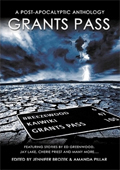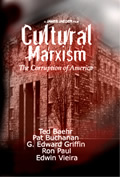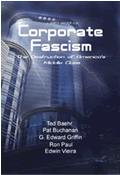NATIONAL
HERITAGE AREAS: THE LAND GRAB CONTINUE
PART 1 of 3
by
Tom DeWeese
October 23, 2012
NewsWithViews.com
19 counties in Southern Virginia are being included in a proposed Heritage Area called The Crooked Road National Heritage Area. The excuse for this new federal land control program is that it will honor and bring nationwide attention to the rich musical heritage of the area that was home to such famous acts as the June Carter Family. Plans call for a 300 mile Heritage Corridor that will connect nine major heritage venues and more than 50 affiliated music venues. Tourism and economic growth are the promises.
It all sounds so American until you begin to look at the details, including documents not open to the public, refusal to announce the plan to those in the affected area, and a hoard of federal agencies and special interest groups ready to suck up the tax dollars.
In desperation, local activists and scared property owners asked me to journey to the area and give them the facts on the dangers of National Heritage Areas. Below is what I told them. (TAD)
National Heritage Areas. What does that term mean to you? We hear it a lot. There are many government programs dealing with historic preservation.
There is the Scenic Rivers designation. The American Heritage Rivers Initiative. And then there’s the National Register of Historic Places and the National Historic Landmarks Program, to name a few. By the way, National Heritage Areas are not to be confused with United Nations Heritage Sites. That’s a different animal.
Americans love history. And we love preserving significant places that played an important role in the making of our unique nation. So when we hear of a new plan in our area presented as a chance to preserve some of our local heritage we are interested and even supportive.
But, in this day of massive government control over so much of our land, our economy, and our basic ability to live free lives, we must be cautious and look at the details of plans, no matter how innocent or well meaning they may seem. National Heritage Areas are such a concern.
I’ve been studying them for about a decade, and have grave reservations. In fact, my organization, the American Policy Center has been one of the only groups in the nation to testify in Congress concerning Heritage Areas.
Here’s
what I know about them. Heritage areas are sold as a means to honor
historic or cultural events that took place in a specific locale. We
are told that they will preserve our culture and honor the past. That
they will preserve battlefields where our forefathers fought and died
for freedom.
That they will preserve birth places, homes, buildings and hallowed
grounds for posterity. And we are assured that they will help build
tourism and boost local economies.
Is all of this true? Is that what National Heritage Areas are really about? Well let’s take a look.
Pork and top-down land control
Specifically, what is a National Heritage Area? To put it bluntly, it is a pork barrel earmark that harms property rights and local governance. Let me explain why that is. Heritage Areas have boundaries. These are very definite boundaries, and they have very definite consequences for folks who reside within them. National historic significance, obviously, is a very arbitrary term; so anyone’s property can end up falling under those guidelines.
Here are the details as to how a Heritage Area operates. Specifically, funding and technical assistance for Heritages Areas is administered through the National Park Service, a federal agency with a long history of hostility toward private landowners.
The recipients of these funds, in partnership with the Park Service, become a “managing entity,” which typically consists of strictly ideological special interests groups and local government officials. The managing entity sets up non-elected boards, councils and regional governments to oversee policy inside the Heritage Area.
In the mix of special interest groups you’re going to find all of the usual suspects: Environmental groups; planning groups; historic preservation groups; all with their own private agendas – all working behind the scenes, creating policy, hovering over the members of the non-elected boards (perhaps even assuring their own people make up the boards), and all collecting the Park Service funds to pressure local governments to install their agenda. In many cases, these groups actually form a compact with the Interior Department to determine the guidelines that make up the land use management plan and the boundaries of the Heritage Area itself.
Now, after the boundaries are drawn and after the management plan has been approved by the Park Service, the management entity and its special interest groups, are given the federal funds, typically a million dollars a year, or more, and told to spend that money getting the management plan enacted at the local level.
Here’s how they operate with those funds. They go to local boards and local legislators and they say, Congress just passed this Heritage Area. “You are within the boundaries. We have identified these properties as those we deem significant. We have identified these businesses that we deem insignificant and a harm to these properties and a harm to the Heritage Area. We don’t have the power to make laws but you do. And here is some federal money. Now use whatever tools, whatever laws, whatever regulatory procedures you already have to make this management plan come into fruition.”
Yet, incredibly, proponents argue that National Heritage Areas do not influence local zoning or land use planning. Yet by definition this is precisely what they do. Found right in the language of Heritage Area legislation, including a new bill before Congress right now - H.R. 4099, the management entity is specifically directed to restore, preserve, and manage anything and everything that is naturally, culturally, historically, and recreationally significant to the Heritage Area.
This sweeping mandate ensures that virtually every square inch of land within the boundaries is subject to the scrutiny of Park Service bureaucrats and their managing partners. That is the way it works. It’s done behind the scenes – out of the way of public input.
It is also worth noting that these are permanent units of the Park Service. Proponents claim NHAs are merely seed grants, and that sooner or later, they will attain self-sufficiency and no longer need federal funding. Yet National Heritage Areas almost never meet their funding sunset triggers. Once created, they are permanent units of the National Park Service and always dependent on increased federal funds. And the Park Service has testified several times that they, indeed, could be considered permanent units of the Park Service because they always need oversight.
In addition, within the Heritage Areas, the Park Service looks for opportunities to create other Park Service programs. Former Deputy Director of the National Park Service, Donald Murphy, testified before the Senate Subcommittee on National Parks that one of the things the Park Service does when administering National Heritage Areas is survey land that would be suitable for future National Parks or National Park expansions.
Of course, as with so many other invasive planning schemes, we are always assured that these are local initiatives, and that these are something citizens want in order to bring an honorary federal designation to help drive tourism into their regions.
It simply isn’t the case. For the most part, Heritage Areas are first dreamed up by national organizations or small wealthy organizations within the locality which are looking to promote their own agendas – paid for by federal tax dollars.
The
process then becomes federally driven by the National Park Service which
uses the legislation to hand out cash to the very groups that are pushing
them.
The connection between Heritage Areas and Sustainable Development
But there is another driving force behind Heritage Areas – something with which all you may very familiar.
I mentioned H.R. 4099, a bill now before Congress to “Authorize a National Heritage Area Program, and for other purposes…” The bill describes the need for Heritage Areas this way: “Certain areas of the United States tell nationally significant stories; they illustrate significant aspects of our heritage; possess exceptional natural, cultural, scenic, and historic resources; and represent the diversity of our national character.”
So, name a section of our nation that doesn’t contain “significant stories.” Or locate a place where people from the past didn’t walk, live or carry out their lives. That definition is simply too broad to be practical – if the real purpose is to honor our heritage.
But the bill goes on to explain: “In these areas, the interaction of natural processes, geography, history, cultural traditions, and economic and social forces form distinctive landscapes that should be recognized, conserved, enhanced, and interpreted to improve the quality of life in the regions and to provide opportunities for public appreciation, education, enjoyment, and economic sustainability.”
Where have we heard these very words before – economic and social forces; conserve; improve the quality of life?
Well, let’s try this quote from the President’s Council on Sustainable Development which said, “Sustainable Communities encourage people to work together to create healthy communities where natural resources are preserved, jobs are available, sprawl is contained, neighborhoods are secure, education is lifelong, transportation and health care are accessible, and all citizens have opportunities to improve the quality of their lives.”
The President’s Council on Sustainable Development, by the way, was organized by Bill Clinton in the 1990’s to create policy to reduce or eliminate “unsustainable” activities by controlling such things as consumerism, high meat intake, use of fossil fuels, roadways, automobiles, dams, pastures, golf courses, and much more.
So, now, wait a minute. Are we talking about historic preservation where we just want to honor our past – or are we talking about a massive zoning process involving central planning? Because that’s what Sustainable Development is. Even the planning groups will admit that.
So, why is the same language of Sustainable Development in a bill on Heritage Areas? Could they be from the same top down agenda?
In that light, consider this additional quote from the President’s Council: “Private land use decisions are often driven by strong economic incentives that result in several ecological and aesthetic consequences…the key to overcoming it is through public policy.” That means new legislation and government programs. And so, what are Heritage Areas but legislation for a new government program.
Did the people of the affected areas ask for it - or did it just appear for no apparent reason? Is there an emergency? Is there a dire need? If so, can anybody name those needs? These questions must be asked before such policy is put in place.
And finally, there is this quote from the same policy making source – the President’s Council: “We need a new collaborative decision process that leads to better decisions, more rapid change and more sensible use of human, natural and financial resources in achieving our goals.” Better decisions for whom – by whom? More sensible use of resources according to whom?
This description of government leads away from elected representatives doing the people’s bidding. Instead it establishes non-elected boards, councils, and regional government entities in which local citizens have little or no input. My friends, the language is the same between Sustainable Development and Heritage Areas because they are both part of the same “collaborative” process.
As proponents talk about historic preservation and heritage inside the Heritage Area, you will also find the catch words “resource conservation” and “resource stewardship,” for example. It’s all about control. Control of the land. Control of resources, Control of decision making. And how does that fit with the claim of preserving the American culture - which was built on the ideals of free enterprise and private property? The fact is, it doesn’t.
In reality, National Heritage Areas are nothing more than land targeted by NPS for future national parks, historic sites, landmarks, and land acquisition. The Rivers of Steel Heritage Area in Pennsylvania has existed almost exclusively as a NPS lobby—outwardly campaigning for federal land acquisition authority and national park status.
Proponents of NHAs also claim that they are “locally driven” projects. Nothing could be further from the truth. Landowners within the boundaries of proposed Heritage Areas are left in the dark throughout the entire process. Why? Because each and every Heritage Area bill refuses to include simple written notification to property owners. Seemingly the Park Service and their management “partners” are not too eager to share all the good news with the local citizenry.
I have personally been in meetings with congressional staffers to discuss Heritage Areas.
Specifically the staff of Congressman Frank Wolfe. I asked them if they intended to notify affected land owners living inside the boundaries of a specific Heritage Area. They looked at me like I had two heads. They shuffled their feet and looked down at the table and then said “there’s no way to do that.” “It would be too costly.” “How could we reach everyone?” And then they quickly moved to change the subject.
Of course the ability is there. The mailman delivers to each and every one of the homes in the designated area every day. The fact is, they don’t want to tell you in advance. You might object. And that would disrupt the “process.” No matter how noble a project may sound, alarm bells should go off when proponents want to enforce their vision in secret.
| Subscribe to the NewsWithViews Daily News Alerts! |
If these National Heritage Areas were truly driven by local enthusiasm we wouldn’t even be here today. Instead, local enthusiasm would have attracted and generated local funding to create local Heritage Areas. Such locally-supported Heritage Areas are plentiful across the nation. Instead, National Heritage Areas depend on federal tax dollars because they lack local interest— and not a single Heritage Area has ever succeeded in attracting that interest throughout their entire infinite lives.
The federal money is the villain. If you just wanted to honor an area for its historic or cultural achievements, a simple resolution from congress and a plaque at the county line could do that. But of course, it’s not about that. It’s about money, control and agendas. For part two click below.











 Share
This Article
Share
This Article





